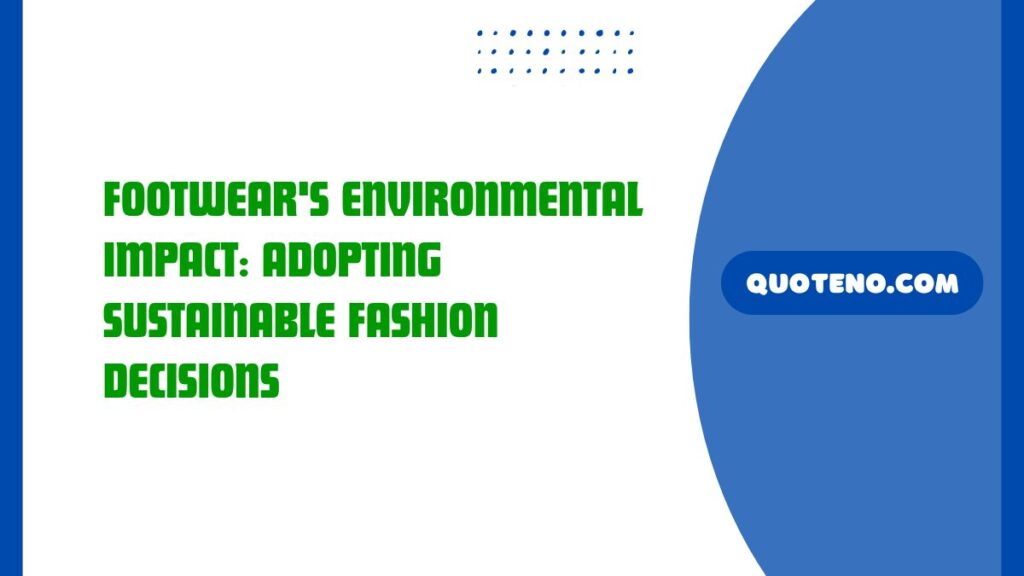The prominence of sustainability in fashion has surged as consumers and industry leaders recognize the pressing need to address the ecological footprint left by apparel and footwear. Sustainable fashion isn’t just a buzzword; it’s a comprehensive approach that encompasses the entire lifecycle of a garment or shoe, striving to minimize adverse environmental impacts. As part of this burgeoning movement, sandals for women and other footwear selections are now scrutinized for their aesthetic appeal and sustainability credentials.
With sustainable fashion, we’re not just talking about the end product. We consider the journey from the ethical sourcing of raw materials to considerate manufacturing practices that conserve precious resources and respect workers’ rights.
There’s also an emphasis on products’ end-of-life, addressing how they can be recycled or repurposed to avoid spending eternity in a landfill. This holistic view propels us towards a fashion industry that can exist harmoniously with our environment.
Key Takeaways:
- The fashion industry’s shift towards sustainability is becoming increasingly important.
- Materials and production processes play a critical role in reducing the environmental footprint of footwear.
- Consumers can drive demand for sustainable products, influencing industry practices.
- Recycling and upcycling present opportunities to extend the lifecycle of footwear and reduce waste.
- Identifying genuine sustainable efforts is essential amidst prevalent greenwashing tactics.
Table of Contents
The Evolution of Sustainable Footwear
The sustainable footwear movement has come a long way from simply eschewing fur or exotic animal skins. It now encompasses a broader spectrum of considerations, including using non-toxic dyes, reducing water waste, and implementing energy-efficient manufacturing processes.
The objective is far-reaching to minimize the immediate environmental impact and set in motion practices that can be maintained for generations to come. This evolution is an acknowledgment of past mistakes and an explicit declaration that the future of fashion must be forged thoughtfully and responsibly.
Assessing the Footprint of Your Footwear
When we talk about footwear’s environmental ‘footprint,’ we’re considering multiple stages of impact. It begins with the extraction of raw materials and extends to disposal. Traditional methods of shoe production have employed practices that are often damaging to the environment, using high levels of water and chemicals and producing significant waste.
Our challenge now is to measure the actual cost of these practices to understand the visible effects and hidden costs to ecosystems and human health and seek alternative methods to mitigate these impacts.
Materials Matter: Eco-Friendly Alternatives
One of the most straightforward paths to reducing the environmental impact of footwear lies in the materials used. Innovations in the textile industry have brought us biodegradable, recycled, and plant-based materials that offer the look, feel, and durability customers expect without the ecological price tag of traditional alternatives.
These materials challenge the status quo and demonstrate the viable, sustainable options at our disposal. The range of sustainable materials expands from algal bloom foam for insoles to recycled plastic uppers.
The constant drive towards more environmentally friendly options continues beyond the raw materials. It extends to every component and process involved in the creation of footwear.
Ethical Production Processes in Footwear Manufacturing
Ethical production processes are a cornerstone of sustainable footwear. Some brands initiate change by overhauling their supply chains, ensuring fair wages and safe working conditions, and investing in renewable energy sources. These initiatives demonstrate a comprehensive approach to sustainability that extends beyond the tangible product and into the ethos of a brand’s operations.
The Role of the Consumer in Sustainable Fashion
In the drive for more sustainable fashion, consumers wield considerable power. A more discerning and informed public can influence the direction of brands and encourage wider adoption of sustainable practices. Consumers can educate themselves on the impacts of their purchases and make choices that reflect their values, simultaneously rewarding brands by taking genuine steps toward sustainability.
The Second Life of Shoes: Recycling and Upcycling Strategies
Recycling and upcycling offer promising avenues for extending the life of footwear. Shoes once destined for landfills are now being repurposed creatively and resourcefully. Recycling programs collaborate with consumers to give shoes a second life while upcycling projects inspire a do-it-yourself ethos that promotes individual innovation and resource conservation.
Innovative Brands Leading the Way in Sustainability
Innovative brands are emerging as the torchbearers of sustainable footwear. Such companies are incorporating eco-friendly practices into their current processes and actively researching and developing new methods and materials that could revolutionize sustainable fashion.
While it’s clear there is still much to be done, the initiatives and advancements made by these brands exemplify the potential for a sustainable future in the industry. Evidence of such endeavors can be found in features like Sustainable Fashion Brands Making a Difference, which spotlight the brands talking and walking the walk.
Navigating Greenwashing in the Shoe Industry
For all the genuine progress being made, however, the industry also faces the challenging phenomenon of greenwashing, where marketing is leveraged to portray an image of environmental responsibility that may not fully align with reality.
It’s vital for consumers to approach such claims critically, seeking out transparency and verifiable certifications that back up sustainability boasts. Knowledge is power in this context, and the well-informed consumer is a potent force for good in the push for genuinely sustainable footwear.
- Divorce Annulments Demystified: Facts, Misconceptions, and What to Know - December 8, 2025
- Setting Healthy Boundaries for Better Mental Wellness - November 20, 2025
- Creative Ways to Make Camping Trips Fun for Everyone - November 7, 2025

